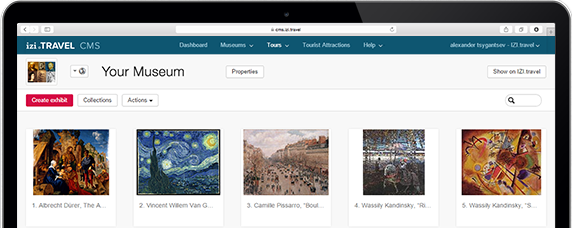Audio tour The Middle Ages
- Download the app
- iOS
- Android
- Windows Phone
With the fall of the Roman Empire, the household culture was lost. Characteristic features of the Early Middle Ages in Europe were the migration of peoples and the wars. Barbarians began to settle in the lands of the Roman Empire. They destroyed everything created by ancient civilization.
However, the European culture in the following centuries continues to form and to develop. The period of progress of science and art began, the first universities appeared. Development is also facilitated by acquaintance with the culture of Byzantium during the Crusades, the resettlement of Byzantine scholars in Western Europe. Subsequently, the book printing also developed.
In the Middle Ages, Romanesque and later Gothic styles were formed on the basis of the artistic traditions of Ancient Rome and previous barbarian tribes. Along with architecture and literature, theatre, music, sculpture and painting developed. The temples were built, they still amaze our imagination. But the people of that time gasped in stink, and there ware complete unsanitary conditions in large cities. What was the reason?
Many researchers claim that the reason for this is the formation of the Christian Church, in particular the Catholic Church. In conditions of general decline of culture, the Church for many centuries was a stable social and political institution. It offered people, mostly illiterate, a system of knowledge about the world, about the forces and the laws that operate in it. According to the postulates of the church, excessive attention to a body was considered sinful. Therefore, people practically did not wash. The best situation was in small settlements near the rivers. But the great European cities, surrounded by city walls, with the growing population and the sewer systems created by the Romans, which gradually disappeared, suffocated in an incredible stench. For example, the drinking water was taken from the Seine and at the same time waste was dumped into it too.
Several times, various French kings issued decrees forbidding Parisians to throw garbage and contents of their night pots into the streets. At the same time, neither the city nor the royal authorities undertake to finance the removal of garbage, cleaning of cesspools and ditches. Eventually, King Charles V issued a decree that allowed pouring the contents of night pots, shouting three times before this: "Gardez l'eau!" (from the French “Beware! Water!”). Although there was not quite water in the pots.
Narrow, with multi-storey buildings, polluted with rubbish, waste and faeces that the townspeople threw out of their homes, with offals and blood after processing fish and carcasses - this is what the streets of the medieval Paris looked like. That is why the fashion for large wide-brimmed hats and shoes with high heels or platforms appeared. The most common thing for the townspeople was a night pot. Their contents were poured out of the window into the streets.
Unsurprisingly, such living conditions caused epidemics that claimed thousands of lives.
In the 14th century, the bubonic plague came to Europe. It was a pandemic that Europeans called the Black Death. At the same time, the Pope introduced the category of plague doctors. The status of a plague doctor was higher than the status of an ordinary doctor. The city paid him several times more. The plague doctor's suit was made of waxed cloth or waxed leather. The obligatory element of the costume was a mask with a beak. Laurel, frankincense and rosemary were placed in the beak so that the doctor could breathe in a plague stench. The mask of the plague doctor came into everyday life and became part of European culture. The Venetian beak mask comes from this element.
Tour stops
Reviews
Download the free izi.TRAVEL app
Create your own audio tours!
Use of the system and the mobile guide app is free


